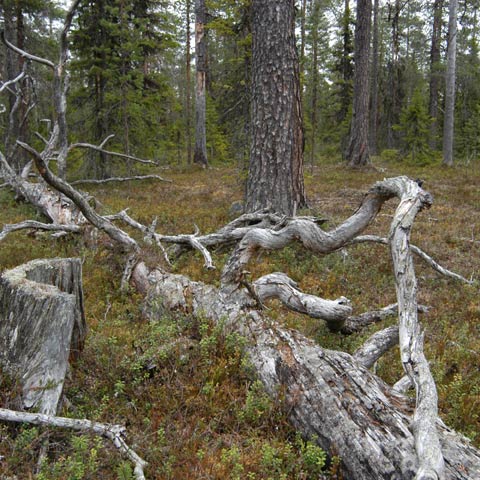Rich underground life discovered at the poles

Life above-ground is scarce beyond the Arctic Circle, but a new study has shown that underground that isn’t the case.
It is generally accepted that above-ground biodiversity is more diverse at the equator than at the poles. But new research by a team of scientists from Lancaster, Colorado and Florida Universities has discovered that the same cannot be said of the microscopic animals that live belowground such as nematodes, mites, and springtails.
In fact, the study, published in Proceedings of the National Academy of Sciences this week, showed the diversity of soil animals in tundra of Sweden and Alaska to be very similar to that of grasslands in Kenya in Africa and Kansas in the US.
Their findings, which were based on soil samples taken from 11 sites around the world, including tropical forest in Costa Rica, arid grassland in Kenya, warm temperate forest in New Zealand, shrub steppe of Argentina, and tundra and boreal forest of Alaska and Sweden, also turned another popular assumption on its head.
The study discovered on average, 96 per cent of identified soil animals were found at only a single location, suggesting most soil animals have restricted distributions, or in other words, they are endemic. This challenges the long held view that these smaller animals are widely distributed.
Professor Richard Bardgett of Lancaster Environment Centre, who led Lancaster University’s work on the study, said: “ This study was a highly ambitious project, being the first to explore the global distribution of microscopic soil animals across most major biomes of the world. We were not only astonished by the shear diversity of organisms that we found across our study sites, but also by the fact that this level of diversity was similar under the harsh conditions of tundra and boreal forest to that of tropical forests. These results are important because they begin to inform on the patterns of diversity of largely unexplored, but highly diverse group of out-of-site organisms that are known to play a major role in the functioning of terrestrial ecosystems.”
This is the first study to do a comprehensive molecular analysis at nearly a species resolution of the global distribution of soil animals across a broad range of ecosystems from the tropics to the poles.
The study also examined how the global distribution of soil animals relates to factors such as climate, soil nutrient levels, and aboveground biodiversity.
Results showed sites with greater aboveground biodiversity appeared to have lower diversity beneath them in soil. The main factors explaining this low soil animal diversity at sites with high aboveground diversity were high levels of soil inorganic nitrogen availability and lower pH compared to other sites.
Some sites with high animal biodiversity, like the Kenyan grassland site, are those sites considered more at risk due to land use and population increase.